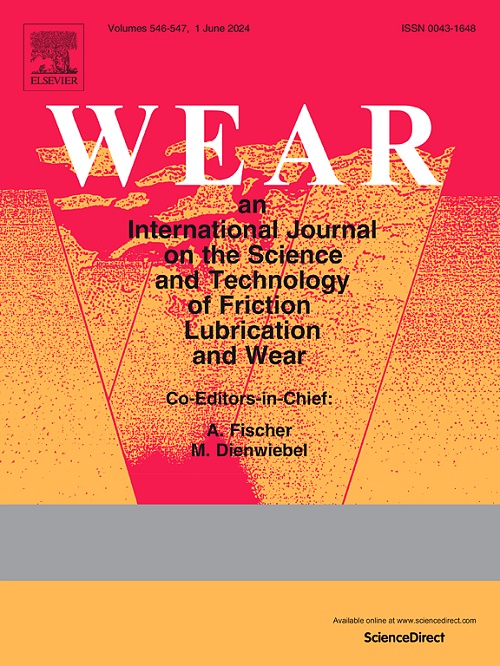Slurry erosion of tool steels by large erodent particles
IF 5.3
1区 工程技术
Q1 ENGINEERING, MECHANICAL
引用次数: 0
Abstract
Most of the erosion wear studies that have been conducted so far have been using particle sizes in the range of 20 μm–1000 μm. This research aims to bridge that gap by elucidating the effect of using large particles (2–4 mm) on erosion wear on a set of ten different tool steels using a slurry with 7.5 wt % of crushed silica at an impingement angle of 45°. Based on the effect of hardness on erosion resistance, the materials can be separated into two groups: One group of tool steels showed a good relationship between erosion resistance and initial hardness while the other group showed much less dependence on alloy hardness. No clear trend was observed on the effect of carbide volume fraction on erosion resistance. It was found that the ratio of hardness to Charpy impact toughness (CVN), , was an important parameter affecting the erosion resistance; wear loss increased initially with increase in the ratio and reached maximum at the ratio of 122.5. Further increase in this ratio led to decreased erosion resistance. Microhardness profile measurements beneath the wear surface revealed that the strain hardening of the matrix might have contributed to dissipating damage produced by the impact of large erodent particles. Additionally, wear scar analysis showed that microcutting and microploughing were the main operating wear micromechanisms along with indentation and microcracking for some steels. Indentation was less pronounced for steels having higher hardness/impact toughness ratios.
求助全文
约1分钟内获得全文
求助全文
来源期刊

Wear
工程技术-材料科学:综合
CiteScore
8.80
自引率
8.00%
发文量
280
审稿时长
47 days
期刊介绍:
Wear journal is dedicated to the advancement of basic and applied knowledge concerning the nature of wear of materials. Broadly, topics of interest range from development of fundamental understanding of the mechanisms of wear to innovative solutions to practical engineering problems. Authors of experimental studies are expected to comment on the repeatability of the data, and whenever possible, conduct multiple measurements under similar testing conditions. Further, Wear embraces the highest standards of professional ethics, and the detection of matching content, either in written or graphical form, from other publications by the current authors or by others, may result in rejection.
 求助内容:
求助内容: 应助结果提醒方式:
应助结果提醒方式:


